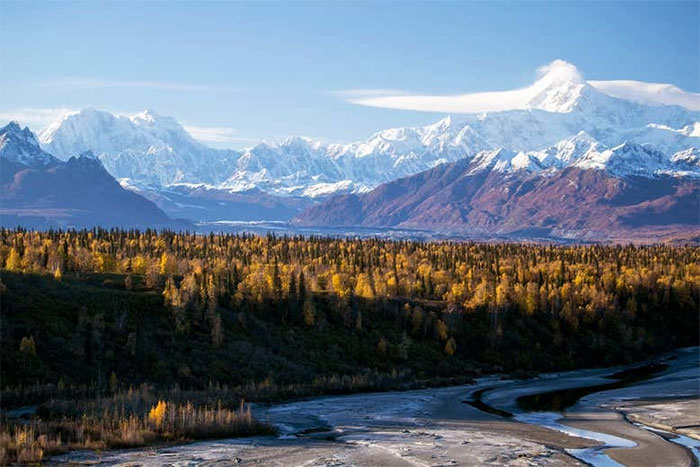Only 1/5 of the planet is unexplored
Humans have explored most places on the planet. And now, according to the researchers' calculations, only one fifth of the land without ice on Earth has not been affected by humans.
A team of researchers led by Dr. Jason Riggio, University of California, USA, analyzed four separate maps showing human influence around the world at different times between 2009 and 2015. After There, they created a global map highlighting the areas where people have the least influence.

Denali Mountains in Alaska, USA. There are still wilderness areas where humans have no influence. (Image: Getty Images).
Researchers have identified areas of very low human influence that land is not occupied, used or contained by low-density indigenous populations. These are wilderness areas mainly visited by tourists but not inhabited.
After excluding an estimated 10% of the Earth that is currently an icy region like Antarctica and most glaciers in the Arctic or elsewhere in the world and calculating the errors between the four maps, the scientists have found that the remaining 21% of the Earth has very low human influence.
The land of human influence is low - areas that are not widely used or occupied by people, with low human and cattle densities, accounting for about 46% of the planet's landless ice.
Most areas of low human influence on the planet are cold, high or dry lands, such as the Arctic landscape, high mountain regions or deserts. In contrast, only about 10% of the grass land and dry forest have low human influence, Dr. Riggio said.
The analysis shows that the overall trend is that the Earth continues to lose its natural landscape and that human influence is increasing globally , Dr. Riggio said.
According to him, a map of global human influence is important to understanding the extent and intensity of human pressure on the Earth's ecosystem. Highlighting the rest of the planet with little human impact can also help governments and organizations to plan and prioritize which parts of the world need protection.
- Resentment - An unexplored mystery
- Reveal an unexplored island in Antarctica
- NASA launches the first Pluto probe
- The most Earth-like planet shows up
- 99.99% has the 9th planet in the solar system
- The 9th planet has ice-covered iron core
- Close-up photo of planet Lk C15 was born
- Fluttering new evidence of the existence of the 9th planet
- Detecting the planet is forming
- Discovering the planet can survive life
- The top 5 most Earth-like planets have been discovered
- Detecting water on a distant planet
 'Fine laughs' - Scary and painful torture in ancient times
'Fine laughs' - Scary and painful torture in ancient times The sequence of numbers 142857 of the Egyptian pyramids is known as the strangest number in the world - Why?
The sequence of numbers 142857 of the Egyptian pyramids is known as the strangest number in the world - Why? History of the iron
History of the iron What is alum?
What is alum?